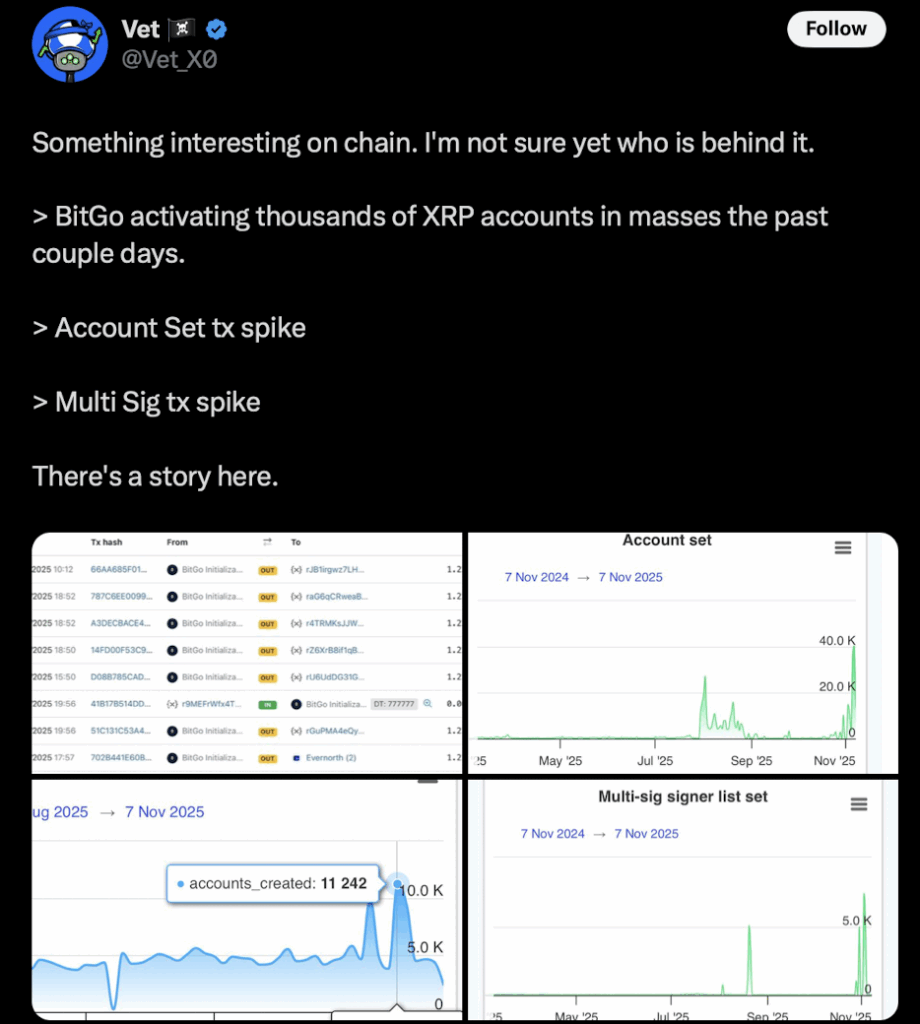- BitGo’s wallet automation caused about 11,000 failed XRP Ledger transactions after the wallet ran out of XRP.
- The glitch was traced to a missing balance check, not a security issue, and was fixed after BitGo replenished the wallet with 1,048 XRP.
- The event underscores how automation errors can create large-scale disruption on public blockchains if proper safeguards aren’t in place.
The XRP Ledger ran into a strange hiccup recently after a technical error from BitGo, one of crypto’s biggest digital asset custodians, caused thousands of failed transactions to flood the network. The disruption was short-lived, but it served as a reminder that even small automation errors can ripple across an entire blockchain.
A wallet runs dry and chaos follows
The whole thing started when BitGo’s automated account management system kept trying to create new XRP accounts, even after the wallet responsible for those transactions had completely run out of XRP. On the XRP Ledger, creating a new account requires a minimum base reserve of 1 XRP, otherwise the transaction gets rejected automatically.
But BitGo’s automation didn’t stop — it just kept sending requests into the void. This triggered a cascade of “UNFUNDED_PAYMENT” errors, essentially failed attempts to open new accounts with no balance to back them up. Blockchain trackers lit up almost instantly, showing nearly 11,000 account activation attempts in a single day, way beyond normal activity levels. It didn’t break the ledger’s consensus or security, but it sure made the network logs messy for a while.

Community spots the problem fast
Members of the XRP community were quick to flag the anomaly. One XRPL contributor known as Vet noticed the unusual burst of failed activations and speculated that some automated process had gone rogue. Within hours, developers confirmed that the surge was indeed coming from BitGo’s systems, not a coordinated attack or exploit.
After identifying the root cause, BitGo ran an internal check and found the culprit — a simple automation loop that didn’t have a proper balance check coded in. The company quickly added 1,048 XRP back into the affected wallet to restore normal functionality. Once that deposit landed, the wave of failed transactions came to a stop, and the XRP Ledger returned to its regular rhythm. No user funds were affected, and no malicious activity was found, just a small but loud glitch from an otherwise routine process.
Lessons learned from a small but noisy bug
While the incident didn’t cause any financial damage, it did highlight a key risk in automated blockchain operations. When custodians or institutional systems interact directly with public ledgers, even a minor scripting oversight can create large-scale noise or temporary strain on the network.
BitGo’s quick response helped contain the issue before it grew worse, but the event still acts as a quiet warning for the entire industry. Automated systems need tighter safeguards — things like balance checks, transaction limits, and real-time monitoring — to prevent small code slips from turning into network-wide headaches.
Right now, everything’s back to normal on the XRP Ledger. BitGo’s systems have stabilized, and the company says additional fail-safes are being reviewed to prevent something like this from happening again. But the takeaway is clear: automation is powerful, sure, but without careful oversight, it can just as easily flood a blockchain as it can help run one.














